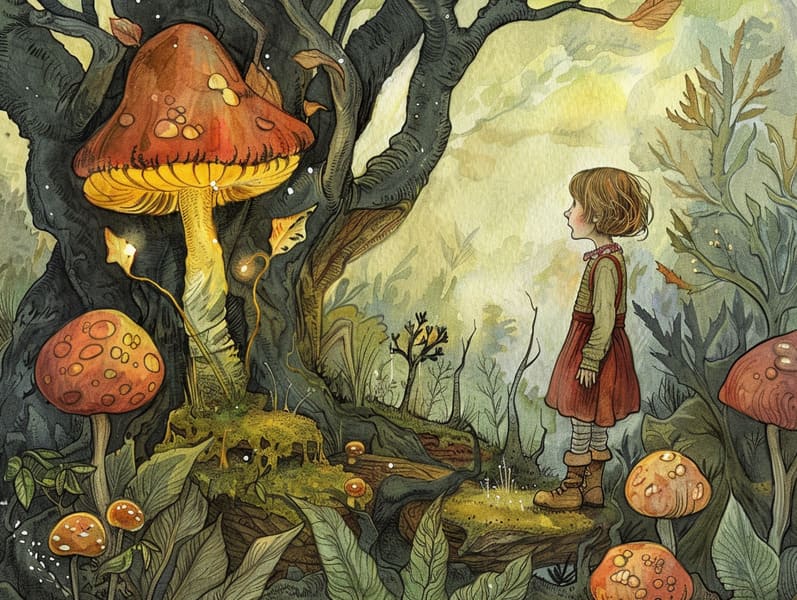The Story Behind Legendary Fairy Tales and Their Perpetual Allure.
The Story Behind Legendary Fairy Tales and Their Perpetual Allure.
Blog Article

Traditional fairy tales have deep roots. These stories have been told from one generation to the next millennia before they were ever transcribed. They came from a variety of traditions, including Middle Eastern traditions. They were initially told among elders, often carrying themes and messages concerning the societal norms and beliefs of the time.
The famous Grimm duo, Jacob and Wilhelm (the Grimm brothers), were among the first to gather many of these beloved fairy tales. Their volume, "Grimm's Story Collection," included stories like "The Little Glass Slipper," "Hansel and Gretel," and "Snow-White and Rose-Red," which have since become mainstays in the world of iconic fairy tales. Similarly, Andersen's delightful narratives, such as "The Story of the Little Mermaid," and "The Duckling's Story," have captured hearts worldwide, ensuring their place in the pantheon of famous fairy tales.
Even though they are old, fairy tales remain as impactful as ever, especially as children's night stories. These magical stories are now available in multiple formats, including colorful picture books, magical animations, and web-based fairy tales.
Their lasting presence can be attributed to several delightful features:
Important Morals: Old fairy tales often convey important moral lessons. Stories like "The Wolf and the Liar" teach the significance of integrity, while "The Race of the Tortoise and the Hare" illustrate the qualities of tenacity and meekness. These stories offer little ones clear distinctions between ethical and unethical, molding their moral compass in a kind yet lasting way.
Warmth and Understanding: Ancient fairy tales frequently feature beings facing challenges and struggles, urging young readers to empathize with their struggles and applaud their triumphs. For instance, "Beauty and the Beast" demonstrates the importance of looking beyond appearances to appreciate the true nature of a person, encouraging understanding and insight.
Cultural Appreciation: Many ancient fairy tales are interwoven with the cultural contexts from which they were born. Learning from these fairy tales can provide enlightening views into different heritages, advancing a sense of world insight and awareness.
Inventiveness and Fantasy: The magical elements in timeless fairy tales—mythical creatures—spark children’s innovations. These fairy tales carry readers to magical realms, kindling innovative dreams and a sense of curiosity that endures a lifetime.
Old fairy tales are not only charming but also teaching. They function as fantastical tools in advancing various thinking and feeling skills in kids. When classic fairy tales are read aloud, they develop linguistic abilities by offering new language and complex sentence structures. This practice also strengthens auditory perception and concentration, as young readers stay focused, looking forward to see what happens next.
Furthermore, deliberating the themes and characters of classic fairy tales can enhance critical thinking and intellectual skills. Children learn to see patterns, make predictions, and get cause and effect. These contemplations also contribute to young readers articulate their thoughts and check here feelings, cultivating their emotional intelligence.
In today’s technological era, the prevalence of web-based fairy tales has made these narratives more reachable than ever. Web platforms and digital apps provide ample collections of Grimm's fairy tales that can be seen or listened to anytime, anywhere. Fairy tales spoken are particularly common, featuring an entertaining method for the young to experience these entrancing tales. Read-aloud stories and voiced videos move characters and settings to life, often supplemented by bewitching harmonies and harmonies that amplify the tale-telling adventure.
The lasting appeal of classic fairy tales lies in their ability to adapt to today's world while sustaining their key morals. Contemporary updates of these narratives often integrate more varied figures and modern settings, making them pertinent to today’s audience. However, the basic principles of valor, compassion, and equity remain unchanged, continuing to reach children of all ages.
Fairy tales also offer a sense of solace and familiarity. They share a tidy narrative with a recognizable beginning, middle, and end, often wrapping up with the finalization of conflicts and the triumph of morality over wickedness. This reliability can be easing for young ones, yielding a sense of solidity in an constantly changing world.
Traditional fairy tales continue to bewitch and inform new generations, maintaining their attraction and significance in modern society. As children's night stories, they deliver a perfect blend of charm and enlightenment, supporting moral values, empathy, and creativity. The prevalence of web-based fairy tales and the well-liked nature of fairy tales read out loud make sure that these ancient tales remain attainable to new generations.
By holding onto and making known these narratives, we continue to recognize the rich tapestry of storytelling and cultural heritage. Whether you are discovering a gorgeously illustrated book, exploring a electronic collection, or listening to an voice book, the delight of traditional fairy tales is always within reach. These narratives reveal of the endless strength of tales and its ability to connect us across epochs and places.
No matter if you are reading a colorful picture book, viewing a internet collection, or listening through an voice book, the elegance of old fairy tales is always within reach.
These narratives highlight of the everlasting effect of tales and its ability to bind us across epochs and places, creating a bond that captivates and teaches alike.